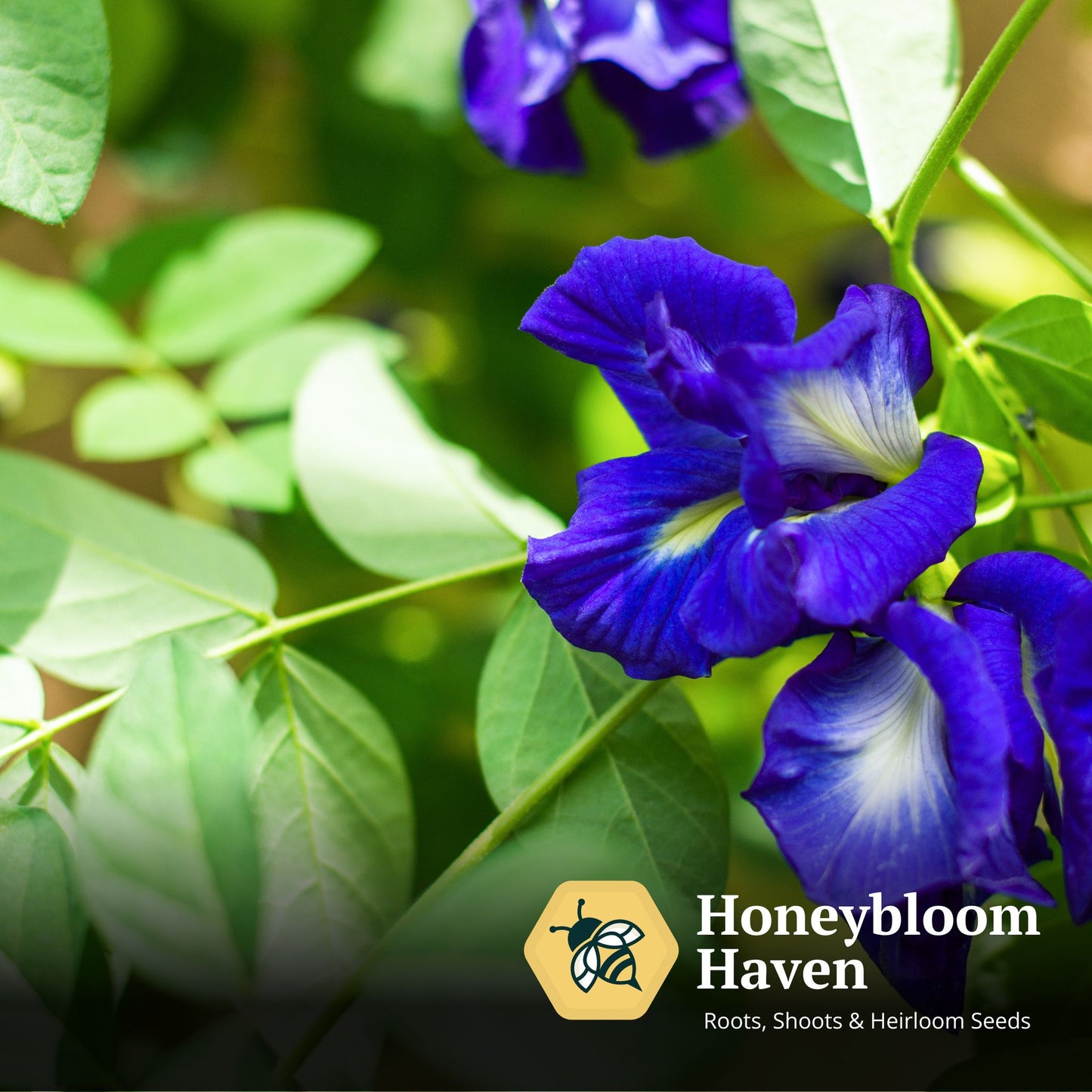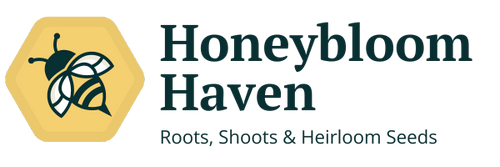Honeybloom Haven
Butterfly Pea, Double Blue
Butterfly Pea, Double Blue
Couldn't load pickup availability
Clitoria ternatea
Type:
The Double Blue Butterfly Pea (Clitoria ternatea) is a remarkable variety that captivates gardeners with its stunning, double-layered blue flowers. Each pack contains seeds of this vigorous vine, making it an excellent choice for adding a unique charm to your garden.
With lush green foliage providing a vibrant backdrop for its eye-catching blooms, the Double Blue Butterfly Pea is perfect for enhancing trellises, arbors, or fences. This fast-growing vine blooms throughout the warm months, attracting butterflies and hummingbirds, which adds both beauty and ecological value to your outdoor space.
Sow seeds directly in the garden after the last frost or start indoors 6-8 weeks prior to planting. Soaking seeds overnight can help improve germination. Space seeds 12-18 inches apart to allow for robust growth.
Support this climbing vine with sturdy trellises or structures, as it thrives on vertical growth. Regular watering promotes healthy development, but once established, the Double Blue Butterfly Pea is also drought-tolerant.
Minimum Seeds per Packet: 5
General Care Information
General Care Information
Lifecycle: Annual
Frost Hardy: No
Bloom Color(s): Blue, Indigo, White
Light: Full Sun (6+ hours)
Water Needs: Moderate (~1 inch per week)
Fertilizer:
Other Info:
Planting Tips
Planting Tips
Ideal Germination Temp: 78-100 degrees F
Seed Planting Depth: 1/2"
Days to Sprouting: 14-21 Days
Plant Spacing: 3-6 inches
Plant Height: 6+ feet
Other Info:
Growing & Harvesting Tips
Growing & Harvesting Tips
- Vigorous, long vines can reach 10-15 feet and need support.
- Harvest frequently to keep plants productive.
- Mulch soil to retain moisture & keep roots cool
- When vines reach the top of the support, pinch the vines to force plants into heavier bean pod production
- Harvest in the morning when sugar content is highest, if eating fresh
Diseases & Pests
Diseases & Pests
Diseases:
Pests:

You may also enjoy adding
-
 Sold out
Sold outButterfly Pea, White
Regular price $5.00 CADRegular priceUnit price per -
 Sold out
Sold outButterfly Pea, Double Lavender
Regular price $5.00 CADRegular priceUnit price per -
 Sold out
Sold outButterfly Pea, Double Blue
Regular price $5.00 CADRegular priceUnit price per -
 Sold out
Sold outButterfly Pea, Blue White
Regular price $5.00 CADRegular priceUnit price per





